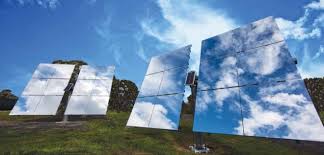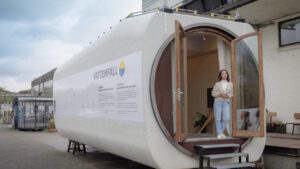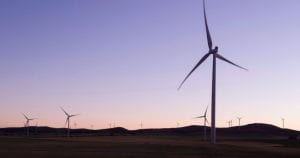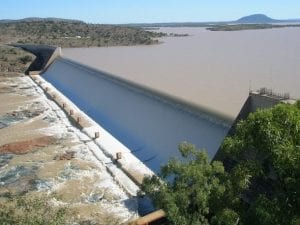Melbourne-based solar technology start-up RayGen Resources has strengthened its strategic foothold in the booming Chinese market, after sealing a new deal with state-owned renewables giant China Three Gorges allowing for a minimum of 500MW of capacity to be built using its Australian-made concentrating solar PV technology.
RayGen – which unveiled its $3.6 million, 200kW pilot CSPV tower plant in the Victorian town of Newbridge in March, claims to be the first in the world to combine high efficiency solar cells with low-cost heliostat collector systems.
It said on the weekend it had signed a memorandum of understanding with Three Gorges to develop a 1MW CSPV pilot plant in China; the second in a series of China-based steps that will test the technology’s ability to scale up.

RayGen CEO Bob Cart said the company was just months away from finishing the initial 200kW pilot in China’s industrial Hebei province, and expected the 1MW phase of the deal to be completed within 12 months. The next step would be to develop a 30MW plant.
All told, it’s a deal that could deliver around $A1 billion in sales for the Australian solar tech leader and its Chinese partner, JuYe (“Intense”) Solar.
“They think our technology could be a real contributor to their demand long term and they are thinking that our costs could be cheaper, our scale-up faster, and ultimately provide a better value than PV,” Cart said in comments the the Financial Review over the weekend. “They’re willing to give us a crack at it.”
And he stressed this point again in comments to RenewEconomy, during a telephone interview on Monday.
“The market in Australia is more difficult than the market in China,” Cart told RE. “(In China) the cost of the end product is less, and the demand is higher. Government policy is very supportive. There’s policy to support increased amounts of renewables. The Australian market lacks those features.
“The reality is, the markets outside of Australia are very strong. If, for whatever reasons, we don’t want renewables in Australia, we should certainly be supporting the companies that make the technology and export it to other countries,” Cart added. “It just makes economic sense.”
RayGen’s unique solar technology – which won it two top awards in the 2014 Australian Technology Competition – uses an array of sun-tracking heliostat mirrors to focus sunlight onto a central receiver, which converts a high proportion of sunlight to power, while an advanced cooling system keeps it from overheating.
The PV panels are made from a material called gallium arsenide, more commonly used in satellites. And while this is more expensive than the usual PV material, silicon, gallium arsenide’s higher efficiency and the smaller quantity required makes it more cost effective, particularly in very sunny areas.
RayGen holds the PV system efficiency world record in collaboration with the University of New South Wales for the conversion of sunlight into electricity: at 40.4 per cent, it is 2.5 times more efficient than traditional PV systems.
The technology is powered by advanced semiconductor devices produced locally, in Melbourne, with the remainder of the system manufactured in-market where the system is deployed – in China, RayGen is partnered with Juye Solar.
This approach has enabled significant scaling up of production at low cost – an advantage RayGen says will allow its technology to produce electricity at half the cost of competing technologies.
Cart himself has repeatedly predicted that CSPV exports from Australia could total more than $1 billion before the end of the decade. He has also said that his technology could deliver electricity at a levelised cost of energy of $60/MWh – a target Cart said again on Monday he could foresee RayGen projects achieving.
According to Zu Liu, deputy director of China Three Gorges’ solar energy division, a 100MW plant using RayGen’s technology could prove to be 10 to 20 per cent lower-cost than a normal solar PV plant of the same size.
“We believe this technology has a big potential to lower down the entire investment of solar power plants, so we decided to do some pilot projects in China to test its commercial use,” Liu said from Beijing.
“At our company we mostly do solar power plants of about 100 megawatts and at that scale we need to study this technology very deeply, to see if it has any limitations to using it at this scale,” she said.
In Australia, meanwhile, the company’s fully operational $3.6 million 200kW pilot plant near Bendigo – which was partially funded by ARENA – currently supplies electricity for a local agriculture business.
The company, which is backed by MYOB founder Craig Winkler, and Alex Wyatt, a founder of China-based carbon broker Climate Bridge, has said it might consider an initial public offer to help with expansion funds.










